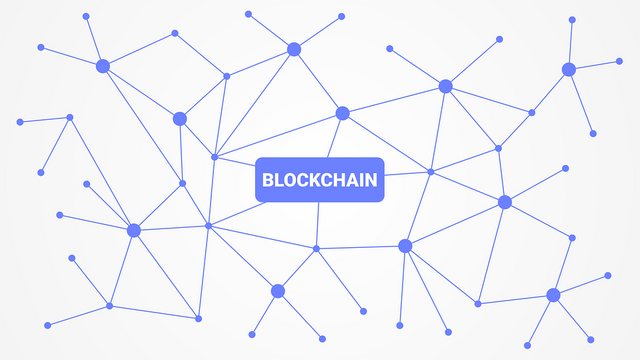An Open Letter to Verizon's Exiters
TL;DR Thousands of Verizon employees have accepted a voluntary severance agreement and are now winding down their terms of employment. If this is you, I invite you to explore the Steem ecosystem while transitioning into the next phase of your life. Whether you are retiring, seeking new employment, or launching your own business, I believe you will find the Steem blockchain to be a nascent and exciting social media platform with amazing possibilities and opportunities.
An Open Letter to Verizon's Exiters
Introduction
I normally don't talk about my professional employment in my personal blog, but for reasons that will become obvious, I am making an exception here. It is public information that Verizon offered a voluntary severance package to 44,000 employees last fall, and that 10,400 employees accepted the offer. I am one of those 10k employees, and my last day on payroll will be June 28. This post is intended to inform the other exiting employees of an opportunity that's available for us to continue to earn income and collaborate during our next phase of life - regardless of whether that means retirement, pursuing future employment opportunities, or even launching into our own entrepreneurial futures.
Last May, I wrote the article, Steem offers a new paradigm for responding to layoffs in the IT industry. This post is a continuation of that line of thought.
This post will proceed in four sections. In the first section, I'll tell you a little bit about my own career background, reasons for accepting the buyout, and future interests. In the second section, I'll write about why blockchain and cryptocurrency are worth pursuing in the next phase of life, and in the third section, I'll talk - specifically - about opportunities that are available to us for collaboration on the Steem blockchain and social media network. Finally, I'll discuss why this opportunity is relevant to Verizon's exiters.

About me
I have been working in IT and data network communications since 1986 or 1987, starting in the US defense sector, but mostly in the telecommunications sector. During the "dot com boom", I jumped around through a number of positions and wound up with Bell Atlantic in 1998 when the musical chairs game stopped. As you are likely aware, Bell Atlantic and GTE merged in 2000 to form Verizon, and I have been with Verizon since then.
I was actually surprised in December to find myself accepting the severance package, because my one single career rule has always been, "Don't leave one job until the next one is lined up." Yet here I am violating my own rule - which has served me well for the last 30+ years. Why?
Of course, there's not a simple answer, but the part that's relevant here is that Verizon is not moving in the direction where I'd like my own career to progress. This is not to say that there's anything wrong with Verizon's direction (IMHO), but it's just that I want my own heading to go a different direction from the company's direction. Specifically, I started playing around in the blockchain space as a hobby in 2015, and that's where I want to direct my future career attentions. In the following section, I'll explain why.

Why blockchain and cryptocurrency?
In the popular lexicon, cryptocurrency still brings to mind images of the wild west. People think of hackers and drug dealers and other illegal transactions. Yet, most of us taking the buyout probably remember when the Internet, itself, was viewed with much the same sort of suspicion. I am firmly of the opinion that cryptocurrency will follow a similar path to respectability and maturity as the Internet followed. Without getting too technical, here are some reasons why I think that blockchain and cryptocurrency will be lasting and important technologies:
Immutability: Once written, the blockchain is a database that cannot be changed. It's a single, timestamped, version of truth that's accessible to anyone. This tends to reduce fraud and other sorts of corruption. Cryptocurrency (cryptographically secured digital money) is one application that works reliably on the blockchain. If you explore, you'll learn that there are many others, and most are still almost entirely untapped.
Bringing the unbanked into the digital economy: Many parts of the world don't have access to banking and lending services. However, most of the people in those parts of the world do have cell phones. This means that there are billions of people who are ripe to be brought into the digital economy through the use of blockchain and cryptocurrency.
Remittances: Watch the TED video, Dilip Ratha: The hidden force in global economics: sending money home to understand how important remittances are to the international economy. Current solutions are wildly expensive. In my opinion, blockchain and cryptocurrencies have the potential to totally disrupt that economy.
Censorship resistance: Front ends are bound by the laws where they operate, but censoring the underlying blockchain is so difficult as to be nearly impossible. Unlike legacy social media platforms, in all likelihood, there can be no politically driven purges of users on the blockchain.
And finally, it's fun. I happen to like learning about technology, and the blockchain and cryptocurrency space provides huge opportunities for learning and playing with emerging technology. Moving on, the next section will tell you why I think the Steem blockchain is a good point for jumping into the blockchain sector.

Why Steem
In this section, I'll start with a high level description of the Steem ecosystem, move on to describe some ways to earn income from it, then I'll move on to give some reasons why I prefer it over other blockchains. Lastly, I'll talk about some common criticisms. For more about this, I highly recommend reading the Steem Whitepaper and Steem Bluepaper.
What is Steem?
Steem is a blockchain that was launched in March of 2016 in order to create a social media ecosystem that pays contributors for their contributions. The ideal, which has been met with varying degrees of success, is that anyone who contributes value to the attention economy gets rewarded in proportion to that value. This was done so that - along with money - it would also be possible to make investments in the form of time, creativity, and attention.
Anyone who has visited a modern blogging or social media site will intuitively recognize most of the front ends that have emerged to provide windows onto the blockchain content.
In order to incentivize content creation and curation, there are three forms of cryptocurrency. STEEM is the liquid form of the blockchain's primary token. Steem Dollars (SBD) are tokens that were intended to remain stable in value by anchoring them to about one dollar's worth of STEEM. (In practice, they have not done very well at maintaining a stable value, but it's a start.) STEEM Power (SP) is Steem that has been locked up in such a way that it can only be withdrawn incrementally over a period of 13 weeks. In return for locking up the investment, the owner receives certain benefits.
How do I earn income from Steem?
As an introductory post, this is vastly oversimplified, but here is a brief overview.
The two primary ways that most people can earn income from Steem are by posting articles onto the blockchain and by voting for articles that other people have posted. After one person creates a post, all blockchain users have seven days to "appraise" its value. They do this through a combination of upvotes, downvotes, and not voting. At the end of those seven days, the post value is fixed and it pays out, with 75% going to the author and 25% going to voters. The rewards to the voters are distributed in a way that early voters (after a 15 minute "cooling off" period) get a higher percentage of rewards as a sort of finders fee.
Steem has been called a "compounding machine" because the size of your voting influence is proportionate to the amount of Steem Power that you have locked up. This means that if you continuously invest your posting and voting rewards back into Steem Power, then you can earn progressively more by voting on posts.
Additionally, it is possible to delegate your Seem Power to other accounts, and many developers offer programs where they will pay a share of their profits in return for delegations.
Finally, application developers can make use of a capability called "beneficiary awards" in order to collect a percentage of each post's rewards, provided that the post is submitted through their application, and traditional rules still apply, so that it's possible to get funding from advertising or subscription fees.
What distinguishes Steem from other blockchains?
Some reasons that I prefer the Steem blockchain to other choices include the following:
Fast Transactions: Steem's blocks are processed in about 3 seconds each. This means that transactions are completed far faster than other prominent blockchains like bitcoin and ethereum. There is no multi-hour wait for your transaction to be confirmed.
Free Transactions: With Steem, you can sign up for free through the steemit.com web site, and once your account is created you can begin transacting immediately. It is a "freemium" system with "resource credits" that ration how much of the network you can use according to the size of your holdings, but users can start earning rewards through social media transactions with no out of pocket cost.
Social Media Use Case: Social media is a proven application, and it only makes sense to reward content contributors for the value that they create. If given the choice between social media for free and getting paid for social media, I have to imagine that most people will eventually choose to get paid.
A thriving community: There are thousands or tens of thousands of people using the Steem blockchain every day for real-world social media activities. To my knowledge, there is no other blockchain with as much actual use (as opposed to speculation and trading).
A vibrant development ecosystem: You can interact with the Steem blockchain through tens or hundreds of different front ends. For a sampling of what's out there, I recommend viewing the decentralized application (dapp) rankings, here. All of those applications are front-ends onto the same underlying Steem blockchain database.
Common criticisms
If you start reading about Steem, in addition to the generic criticisms of all blockchains, you'll find a number that are specifically directed at Steem. In this section, I'll discuss several of them:
The wealth is too centralized and concentrated: This is, perhaps, a valid criticism, but reports over time indicate that the holdings are becoming less centralized as time passes. See here, for example.
It's rigged in favor of the developers: This is actually related to the first criticism. The fact is, when the blockchain launched in March 2016, it was done in a way that enabled the developers to mine far more than other miners, and let the early miners mine more than later ones. This was allegedly done for regulatory reasons, but it did lead to the centralization that is improving, but remains a sore point for many users. Personally, I don't have a problem with this because the developers and early miners took most of the risk, too. They had no idea if their efforts would wind up being worthless or valuable, but they made the efforts anyway. At any rate, it's all history at this point.
Reward distribution is not fair: It depends what you mean by fair. Rewards are distributed by the collective, stake-weighted decision of all holders of STEEM Power. You can work very hard on a post, and get very little in return (as this post will likely demonstrate), but it's important to remember Thomas Sowell's famous question: "Compared to what?" To my knowledge, Steem pays out more to its non-celebrity users than any other social media network. As this post notes, the Steem blockchain has paid out over $60,000,000 during its lifetime. It's not perfect, but in my opinion, it's still the best available option, and I hope for it to improve as it matures.
In short, I would say that there is some validity to most of the common criticisms, but when evaluating the platform it's important to consider it as it is, and as it might become; and it's also important to keep the criticisms in context when most social media users in the world aren't getting paid a penny for their contributions.

Why the space may be attractive to Verizon's exiters
There are at least two reasons why Verizon exiters should consider this possibility - coordinated investment, and coordinated action. With a large number of us receiving payouts and changing employment at the same time, we are in a unique position. It might make sense to try to leverage that position. By approaching the platform in numbers, we can promote our own goals and help each other, too. After all, it is social media, and social media success depends on social networks. The network of Verizon exiters is a decently large group of people with diverse backgrounds, capabilities, and potential.
Making a wild and hopefully conservative guess, if we estimate the average severance payment at about $25K (after taxes), that's about a quarter billion dollars being set loose all at once. If we all go our separate ways, there are limits to what that money can accomplish, but if we collaborate, maybe we can accomplish amazing things through coordinated investments. Now, of course there are limits to how much any unemployed person can prudently invest in a blockchain platform, but even small percentages of that total can still be substantial sums.
Beyond the ability to coordinate our investments, a more important capability is the ability to coordinate action, and support each other as we go through this transition. With the number of people that are being set loose, there is a massive pool of human potential. Basically, almost any required skill can be found to accomplish almost any imaginable goal.
By working together and investing some of our time and/or money in Steem, we can earn income for ourselves and also help other Verizon exiters who are going through their own transitions.
Additionally, the Steem blockchain truly is a developer's playground. Not only can you earn income by blogging and voting on articles, but you can earn income by creating applications that are limited only by your imaginations. Former Verizon workers could collaborate on these and almost certainly find the skills among our peers to take the products from build to launch and through the entire product life cycle.

Conclusion
Thank you to those of you who read this far. If you recently exited Verizon, or if you will soon be doing so, I hope you will consider exploring the Steem blockchain for opportunities. If enough of us do, I think we can use this emerging technology to create some amazing opportunities for ourselves, and for the rest of the world. I invite you to explore this ecosystem and to leverage the professional relationships that you have already created throughout the years to realize these possibilities.
For more about what this might look like, you may also want to read Steem offers a new paradigm for responding to layoffs in the IT industry, which I posted last May.
Feel free to contact me through LinkedIn if you would like to ask me more about it. And if you do sign up for Steem, please make sure to let me know so I can follow your account.
Conflict of Interest Statement
As a holder of Steem cryptocurrencies, I obviously stand to benefit if more people use the blockchain, but I am not affiliated with any of the front-end providers or businesses that currently operate on the blockchain.
Thank you for your time and attention.
As a general rule, I up-vote comments that demonstrate "proof of reading".
Steve Palmer is an IT professional with three decades of professional experience in data communications and information systems. He holds a bachelor's degree in mathematics, a master's degree in computer science, and a master's degree in information systems and technology management. He has been awarded 3 US patents.

Steve is a co-founder of the Steem's Best Classical Music Facebook page, and the @classical-music Steem curation account.
| Follow: @classical-music | Follow: @classical-radio | Classical Music discord invitation: https://discord.gg/ppVmmgt |  Classical Music Logo by ivan.atman Classical Music Logo by ivan.atman |






The wealth is not actually a point here, it's the power too concentrated.
And the fact that it could be adressed with a few lines of code, like changing the number of witnesses to choose from 30 to something like 3 for example. But there's no indication that such an option would be even seriously discussed here.
Good point. Your phrasing is better.
Cool article, made me want to look up the history of Verizon in the last year, had not heard some of these details.
Congratulations! Your post has been selected as a daily Steemit truffle! It is listed on rank 3 of all contributions awarded today. You can find the TOP DAILY TRUFFLE PICKS HERE.
I upvoted your contribution because to my mind your post is at least 6 SBD worth and should receive 221 votes. It's now up to the lovely Steemit community to make this come true.
I am
TrufflePig, an Artificial Intelligence Bot that helps minnows and content curators using Machine Learning. If you are curious how I select content, you can find an explanation here!Have a nice day and sincerely yours,

TrufflePig